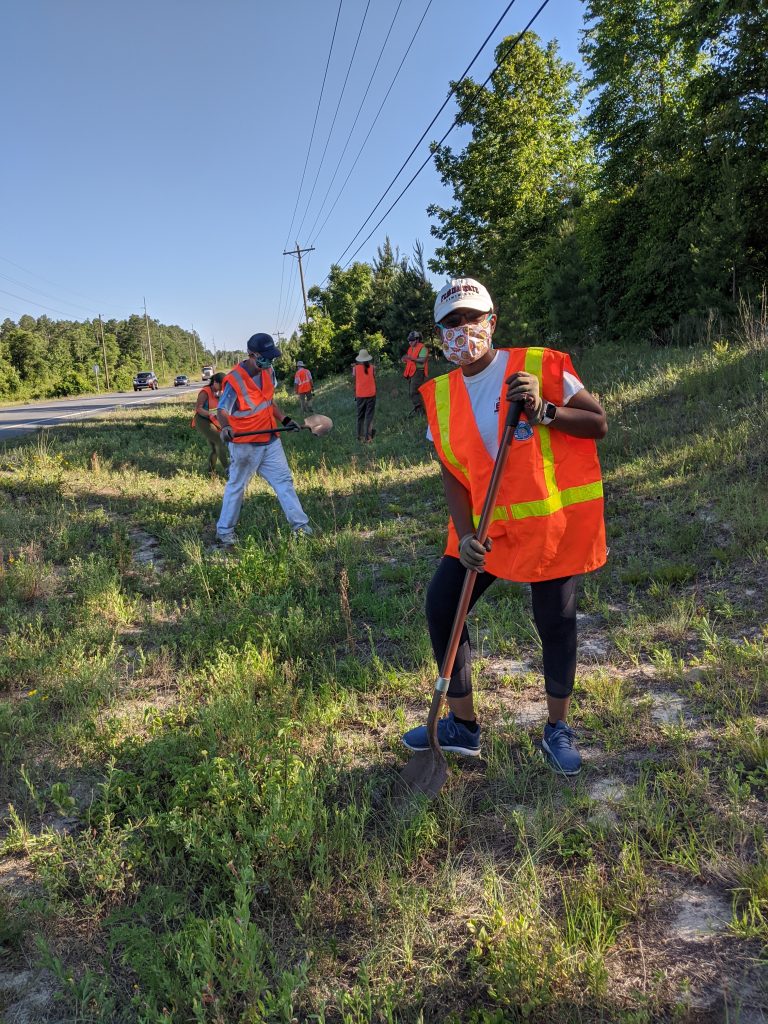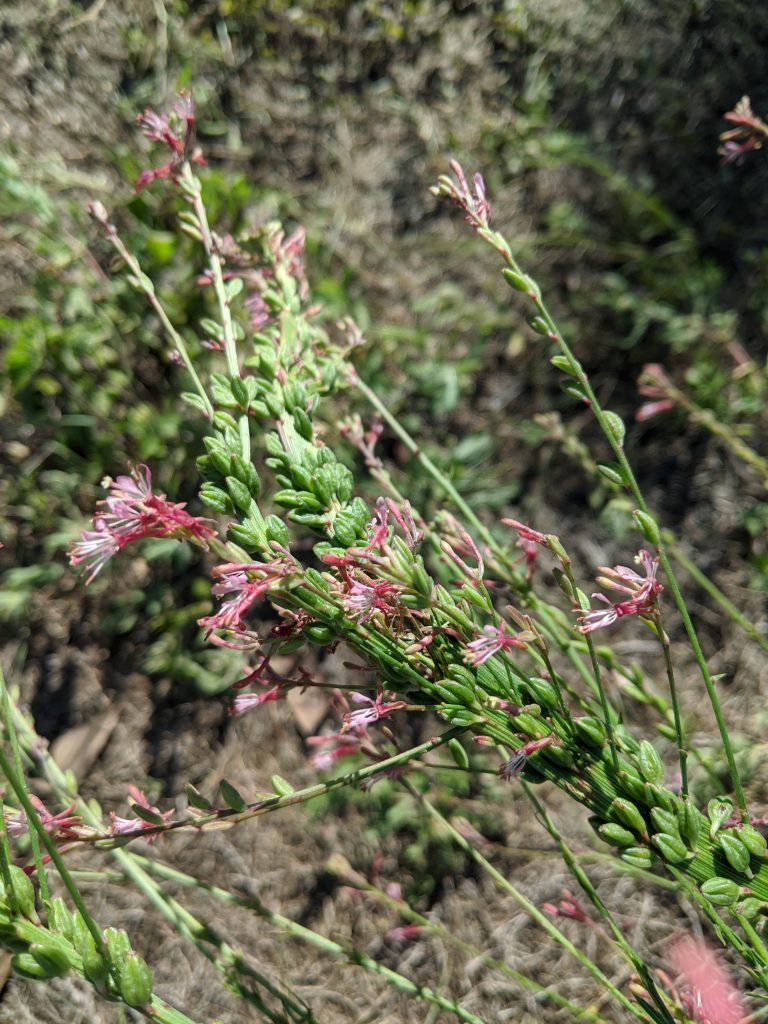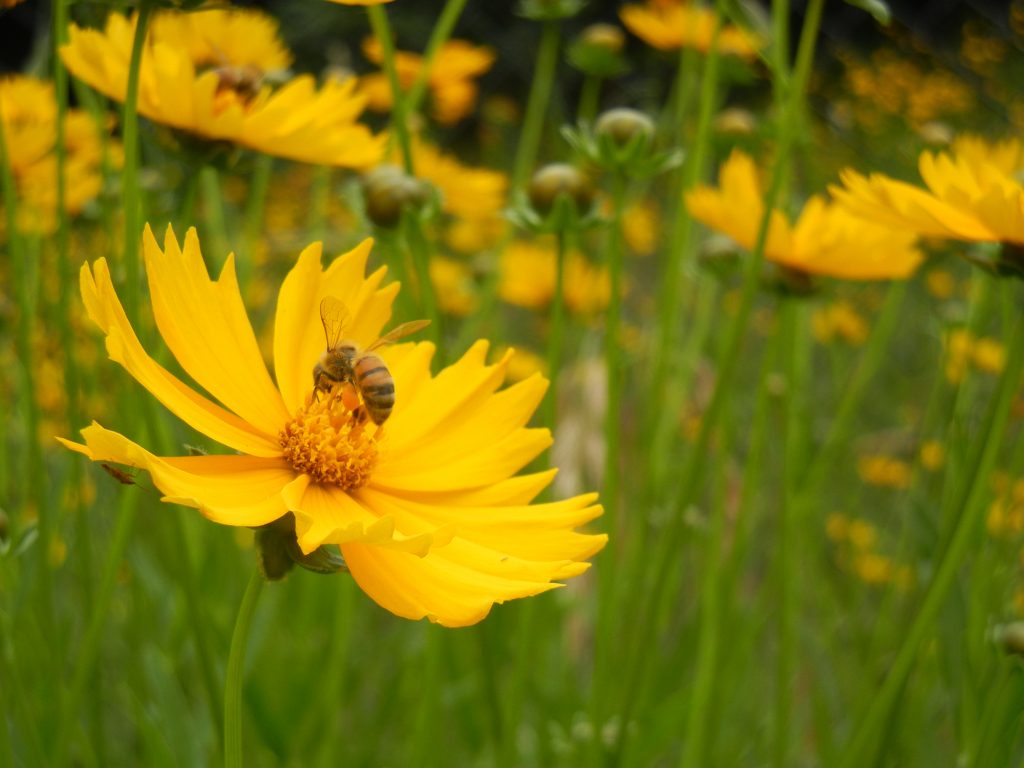My shovel dug into the earth like butter as I created a shallow circle around the base of a coreopsis. Her yellow blooms, those unfurled and those buds waiting, looked up at me in thanks. Of all the times I’ve written about figuratively saving Florida, here I was actually doing it, sweat on my brow, smile on my face.

I joined several plant-lovers on the side of Crawfordville’s U.S. Road 319. Members of the local Native Plant Society, FSU Environmental Service Program, and others who answered Scott Davis’ call came to the rescue. Scott wears many hats, most resembling his passion and expertise in native flora. He works with St. Marks National Wildlife Refuge where he specializes in milkweed (the host plant for Monarch caterpillars – my favorite!).
On this day, a dry May afternoon, we flocked to the roadside. Our mission: to save as many rare, native plants we could before we lost them forever. The Florida Department of Transportation is expanding 319. Controversial for its irreversible impact on the fragile aquifer below and the wildlife of the surrounding Apalachicola National Forest and Wakulla State Forest (among other bits and pieces of important conservation land), the project has gotten to the point where all we can do is save scraps.
I could feel the clock ticking. While relatively easy work, with each shovel of flower and root ball, the work seemed infinite. How could we, a group of less than 10 volunteers, save this entire area? How could we choose between the hundred-year-old wiregrass and our state wildflower, coreopsis lanceolata? As I stopped to take a drink, I stopped to think. Our goal to conserve Florida’s land and water is no small task. There’s thousands upon thousands of acres of flowers, grasses, trees that are under threat. We will lose our most precious, rare species, one acre at a time to sprawl and development. But my work is not for nothing; acre by acre, advocates and volunteers are working to save Florida. While the work is slow and hard, hot and sweaty, it is so, so worth it.

The rescued plants formed piles along the roadside. As we moved, they grew. Piles of coreopsis, phlox, beeblossom, sorrel, and prickly pear waited patiently to be transferred to the protected confines of St. Marks NWR. Looking at their familiar blooms, I adopted a new appreciation for them. Here, on the dusty roadside with cars whizzing past, they thrived. Under the hot sun, with a slight ditch to collect water, and regular disturbance to renew them, wildflowers thrive. In the most unthinkable place, they have remained resilient.
See, wildflowers like disturbance. Naturally, they’ve adapted to what was once huge areas of wildlife territory where disturbance of dirt through digging and paw traffic stimulated growth. They adapted with fire, a natural renewal mechanism that these plants still need today. With this disturbance, they grow free.
But the ultimate disturbance – building a road – they cannot overcome. Spending only an afternoon on the roadside of 319, I face a looming threat to natural Florida: the three proposed M-CORES toll roads. These roads will dissect Florida, leaving our plants and wildlife for dead. From the southwest tip of the Lake Wales Ridge to the biodiverse Red Hills, these roads will literally destroy the ecosystems that make our state special and survivable. From our aquifers to our rivers and estuaries, the roads will forever damage our water supply and ruin the last remaining Florida paradise.

Photo: Wikipedia Commons
While short-term decisions are made to pave over Florida, we lose our natural and cultural heritage long-term. And while the 319 expansion is as good as done – advocates are putting up figurative road blocks in the fight against the toll roads. While bulldozers will arrive on site in Crawfordville later this month, we are still in the midst of the Toll Road Task Force project now. There is still time, and if we can rally together in mass, we can stop the roads to ruin.
Sometimes the fight for natural Florida feels hopeless – the odds and economic interests are stacked against us – but just as I return to the roadside for another shovels-worth of rescued plants, so I will stay vigilant in the fight. Looking around at my fellow advocates, clad in orange vests and a layer of dirt, I feel hopeful. We showed up. We shrugged off doubt and instead took up the shovel for the cause.
You too can support natural Florida, from the comfort and safety of your home. The more we learn about what we have to lose, the better equipped we are to save it. Purchase the FCV Gems Report to learn about Florida’s most threatened remaining lands. Learn about the Roads to Ruin and why they’re bad for Florida, speak out against the deadly project, and help support FCV’s coalition efforts to stop the roads in their tracks. No matter what you do – do not stop. Each one of us has a crucial role to play and together, we can make a difference.


